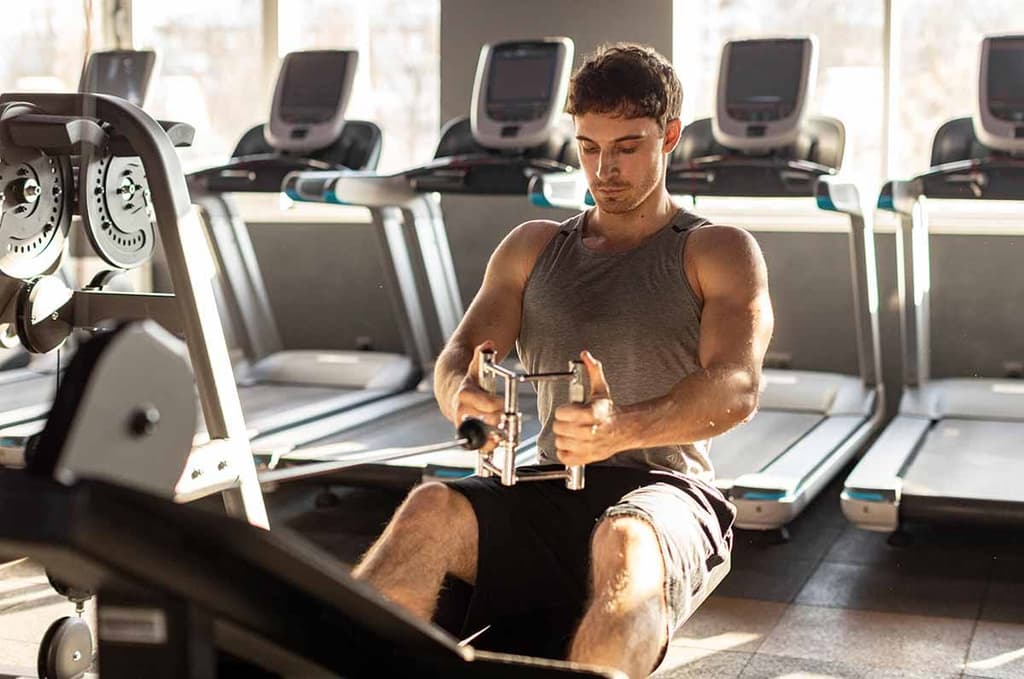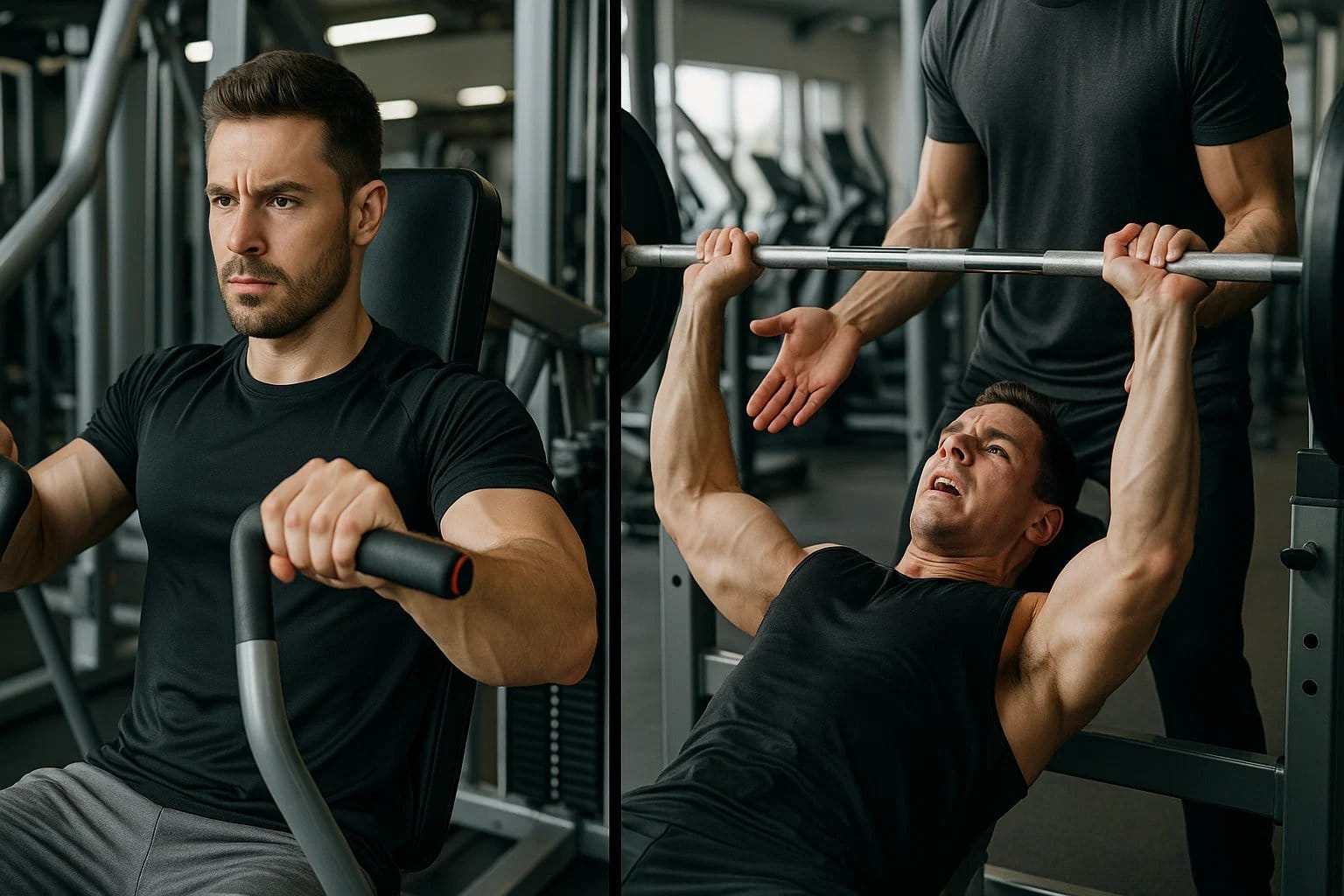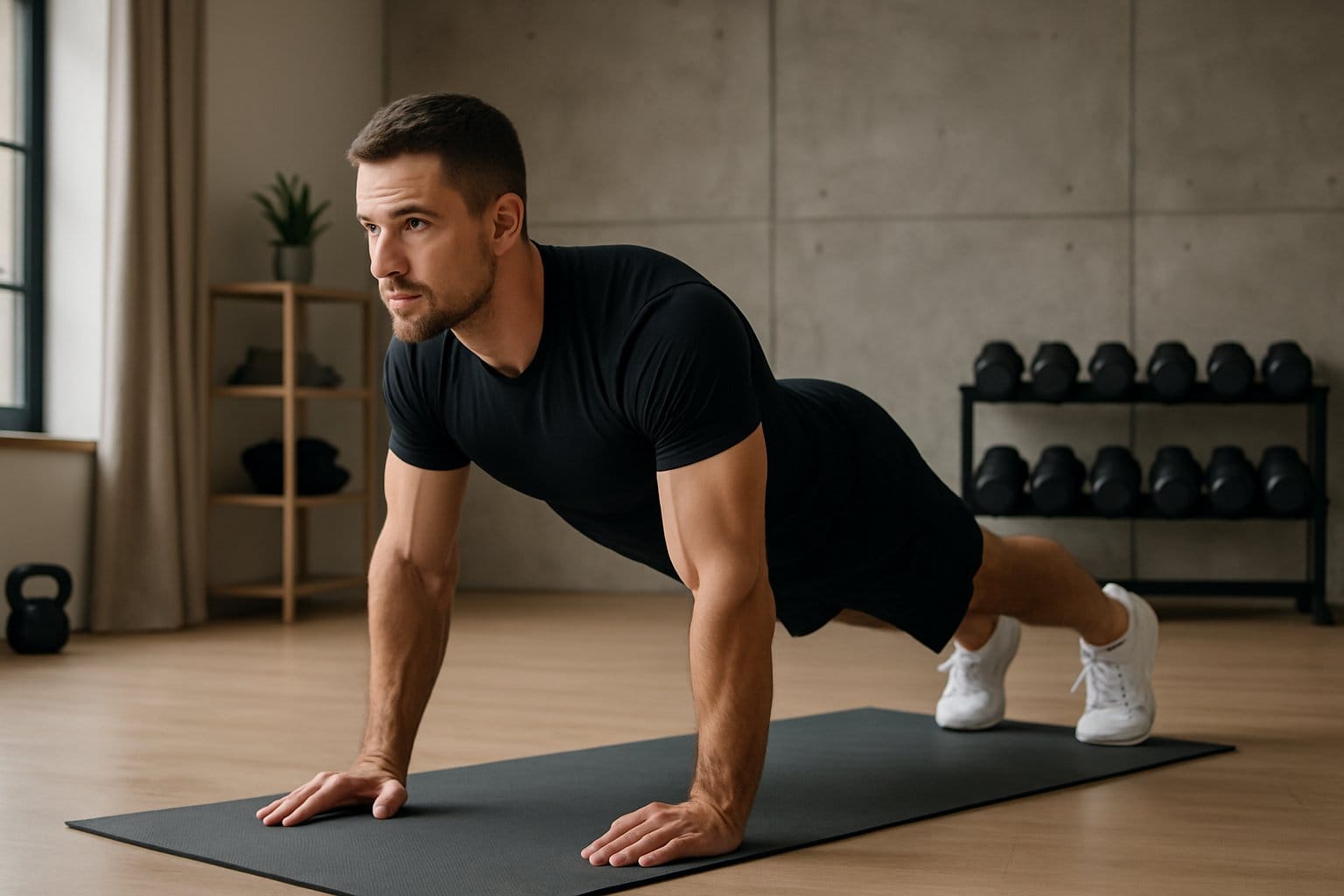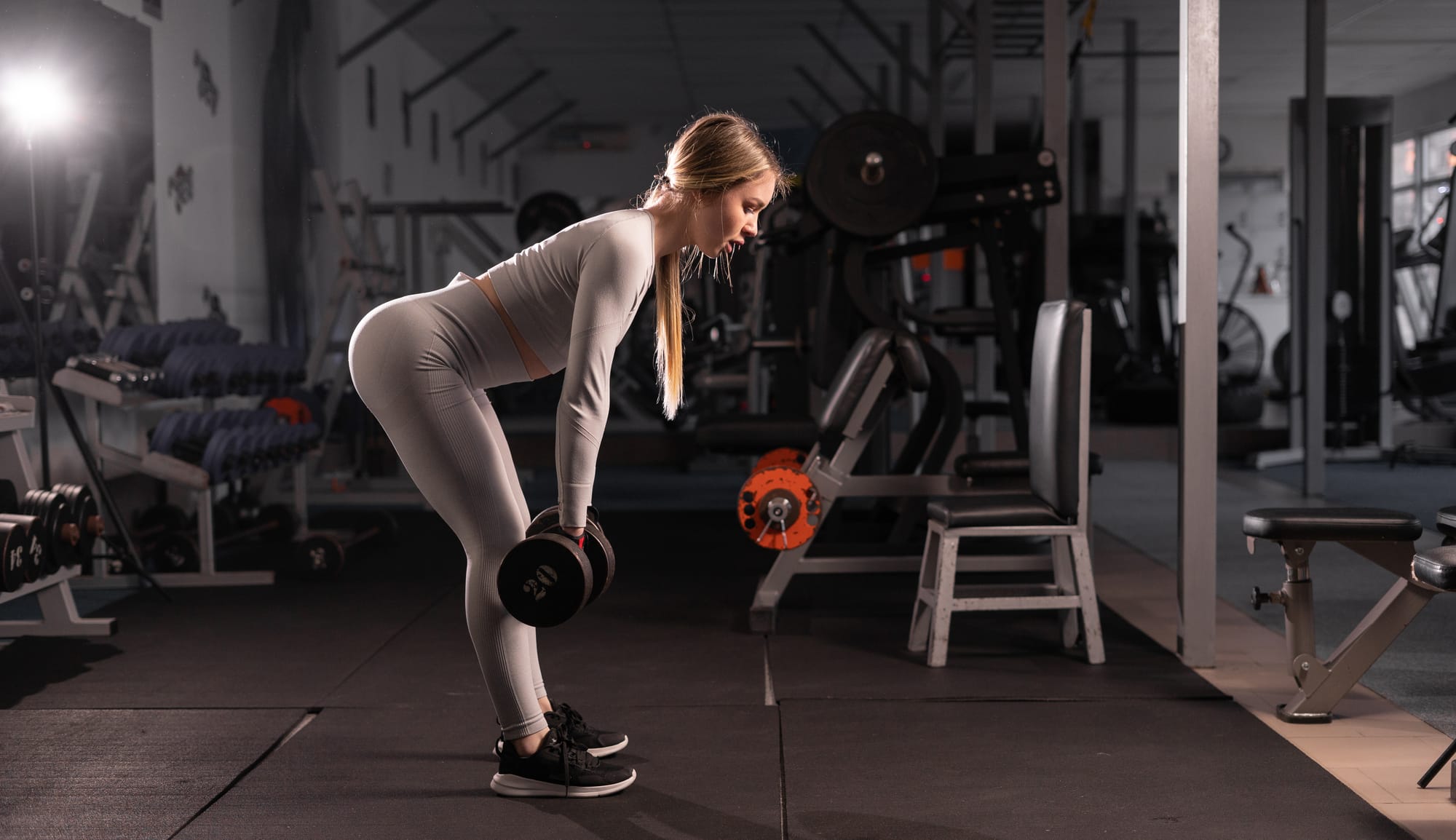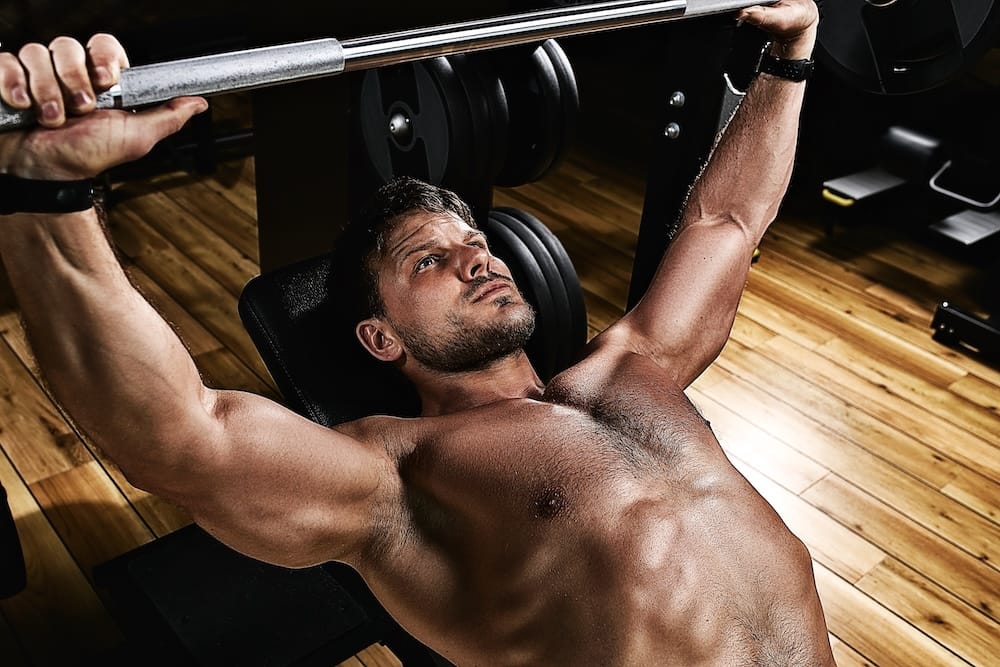6 Top Cable Back Workouts for Strength and Mobility
Learn top cable back workouts to build stronger shoulders, back, and arms. You can do these exercises with TRX rope or cable machine at gym..
Build your strongest back with cable exercises. Cable back workouts are a great alternative to traditional free weights.
We often think about doing this type of pull day workout with free weights. But back cable workouts offer you a more sustained form of muscular resistance compared to working with free weights.
Cable machine back workouts offer an alternative to your typical dumbbell back workouts. Cables are a form of elastic resistance, similar to resistance bands and may help reduce some of the joint strain that free weights can produce.
Take a look at these 6 simple back workouts with cables you can do to gain mobility and overall functional strength in your back.
Cable Machine Back Workouts for a Stronger Back
Here are six effective back exercises using a cable machine, each explained with the specified bullet points:
1. Cable Lat Pulldown

- Set-Up: Attach a straight bar to the high pulley of a cable machine. Adjust the knee pads to fit securely over your thighs.
- Body Position: Sit on the bench. Grab your bar with an overhand grip slightly wider than shoulder-width. Lean back a little. Keep your chest up and core engaged.
- Action: Pull your bar down towards your chest. Squeeze your shoulder blades together at the bottom of the movement. Focus on using your back muscles instead of your arms.
- Reverse: With control, slowly extend your arms to bring the bar back to the starting position. Try to keep the tension in your back muscles the whole time.
- Reps: 3-4 sets of 10-12 reps.
v taper body
2. Seated Cable Row

- Set-Up: Attach a V-bar or a straight bar to the low pulley of a cable machine. Adjust the seat and footplate so you can comfortably reach the handle.
- Body Position: Sit down, placing both feet on the footplates. Keep your knees slightly bent. Grab the bar handle with both hands, sitting upright with your back straight, keeping a neutral spine.
- Action: Pull the handle towards your lower abs. Squeeze your shoulder blades together and keep your elbows close to your body.
- Reverse: Slowly resist your weight to extend your arms again and come back to your starting position.
- Reps: 3-4 sets of 10-12 reps.
3. Single-Arm Cable Row
- Set-Up: Attach a single handle to a low pulley of a cable machine. Stand facing the machine, keeping your feet shoulder-width apart.
- Body Position: Hold the handle with one hand. Bend your knees slightly, and hinge forward from your hips, keeping your back straight and core engaged.
- Action: Pull the handle towards your waist, squeezing your shoulder blade at the top of the movement.
- Reverse: Slowly extend your arm to return the handle to the starting position. Keep control and tension in your back muscles the whole time.
- Reps: 3-4 sets of 10-12 reps with each arm.
4. Face Pull
Face pulls are a great way to use lighter weights and isolate the upper part of the back and shoulders. They also do well as a mid back exercise.

- Set-Up: Attach a rope handle to a high pulley of a cable machine. Adjust your pulley to around head height.
- Body Position: Stand facing the machine with your feet shoulder-width apart. Hold the ends of your rope with both hands. Keep your palms facing down.
- Action: Pull the rope towards your face, flaring both elbows out wide and squeezing your shoulder blades together.
- Reverse: Slowly extend your arms to bring your rope back to the starting position.
- Reps: 3-4 sets of 12-15 reps.
5. Straight Arm Pulldown

- Set-Up: Attach a straight bar to a high pulley of a cable machine. Stand facing the machine with feet shoulder-width apart.
- Body Position: Hold your bar with an overhand grip, hands shoulder-width apart. Step back one foot to create tension on your cable. Hinge forward from your hips, keeping a slight bend in your knees. Make sure your back stays straight and your arms are extended.
- Action: Pull the bar down towards your thighs, keeping your arms straight. Focus on driving the movement from your lats.
- Reverse: Slowly raise your bar back up to the starting position.
- Reps: 3-4 sets of 12-15 reps.
6. Cable Shrug
Cable shrugs are more meant to strengthen your shoulder muscles than your back. But many muscles in the area overlap and work together to power your movement.
If you’re serious about building a stronger back, you’ll need to strengthen your shoulder muscles too. To cable shrug:
- Set-Up: Attach a straight bar to a low pulley of a cable machine. Stand facing toward the machine with your feet standing shoulder-width apart.
- Body Position: Grab your bar with an overhand grip, keeping your hands shoulder-width apart. Stand straight up with your arms extended. Keep your shoulders relaxed.
- Action: Shrug your shoulders up towards your ears. Squeeze your traps at the top of the movement.
- Reverse: Slowly lower your shoulders back to the starting position, maintaining control and tension in your traps.
- Reps: 3-4 sets of 15-20 reps.
What Muscles Do Cable Back Workouts Target?
Cable back workouts target the back (obviously), but how does that break down when we think about anatomy? Let’s look at the specific back muscles that help you power through a cable back workout.
1. Latissimus Dorsi
Your latissimus dorsi aka “lats” help you to stabilize your shoulders and move your arms. These large muscles wrap around your sides and back, helping you to climb, throw, and pull your body up.
2. Trapezius
The trapezius muscles, aka “traps” help you to lift, lower, and rotate your scapulae (shoulder blades). These muscles get their name from their trapezoidal shape, attaching to your shoulders and mid back and extending up the neck.
3. Rhomboids
Your rhomboids also help you perform cable back workouts. These muscles let you stabilize your shoulders and move your upper arms. Rhomboids keep your shoulder blades attached to your ribcage. You have two rhomboids: rhomboid major and rhomboid minor.
4. Levator Scapulae
The levator scapulae help you lift your shoulder blades. They also help enable you to tilt your head from side to side and rotate your shoulder blades downward.
Big Picture
Cables make a perfect alternative to free weights when it comes to bulking up your back. Using elastic resistance is a great way to get in lower-impact back workouts that maintain muscular engagement over the whole course of a movement.
Exercises like pulldowns, face pulls, and rows can effectively target several muscles in your back.
This helps you build up strength and muscle definition.
Make sure to refuel with a high-protein snack after your workout. If your goal is building muscle, try to get in some protein no more than two hours after you hit the gym.
If you’re looking to shed some pounds and get shredded so your back muscles pop, make sure you mix in some cardio workouts. These can include things like:
- Running
- Cycling
- Rowing
- Jump Rope
Combining this type of workout with strength training can help you effectively hit your training goals. You may also want to consider including your cable back workouts as part of a workout split.
Split like the bro split workout, PHUL (Power Hypertrophy Upper Lower) workout and PHAT workout can all incorporate cable back workouts using cables.
We’ve got your back! The Flex App progresses as you do with plate tracking capabilities and auto progression. Try it out for free today.
References
Jeno, S. H., & Varacallo, M. (2023). Anatomy, Back, Latissimus Dorsi. In StatPearls. StatPearls Publishing
Liao, K. F., Nassis, G. P., Bishop, C., Yang, W., Bian, C., & Li, Y. M. (2022). Effects of unilateral vs. bilateral resistance training interventions on measures of strength, jump, linear and change of direction speed: a systematic review and meta-analysis. Biology of sport, 39(3), 485–497. https://doi.org/10.5114/biolsport.2022.107024
Lopes, J. S. S., Machado, A. F., Micheletti, J. K., de Almeida, A. C., Cavina, A. P., & Pastre, C. M. (2019). Effects of training with elastic resistance versus conventional resistance on muscular strength: A systematic review and meta-analysis. SAGE open medicine, 7, 2050312119831116. https://doi.org/10.1177/2050312119831116
Signorile, J. F., Rendos, N. K., Heredia Vargas, H. H., Alipio, T. C., Regis, R. C., Eltoukhy, M. M., Nargund, R. S., & Romero, M. A. (2017). Differences in Muscle Activation and Kinematics Between Cable-Based and Selectorized Weight Training. Journal of strength and conditioning research, 31(2), 313–322. https://doi.org/10.1519/JSC.0000000000001493
Related articles


Get fit with Flex
Build muscle & lose weight fast for free.
Available on iPhone + Apple Watch
